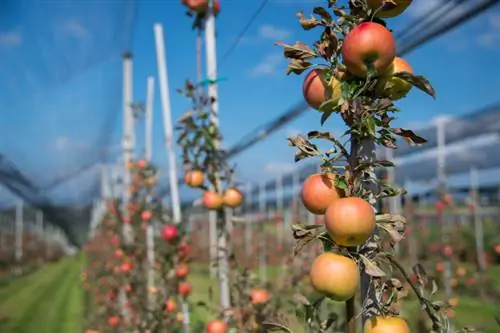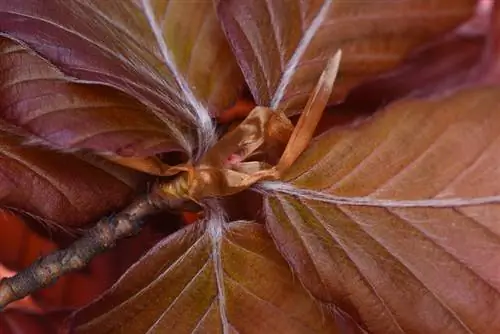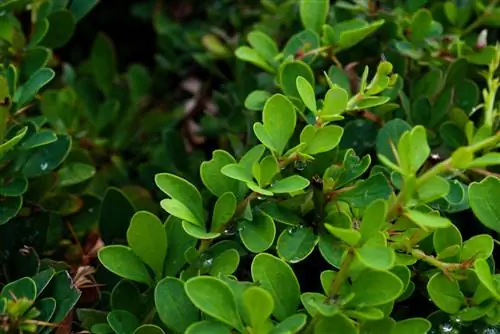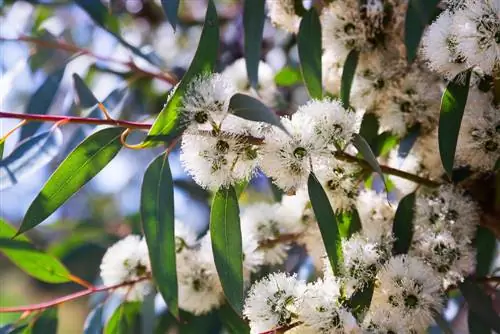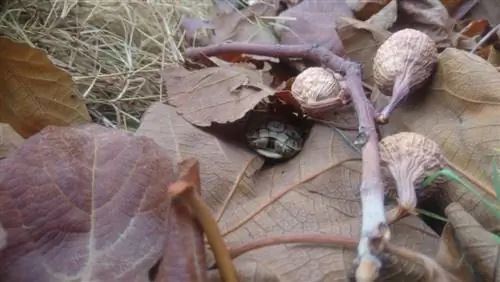- Author admin [email protected].
- Public 2023-12-16 16:46.
- Last modified 2025-01-23 11:22.
It's not just the magnificent flowers that inspire magnolias. The foliage is also impressive. In this guide you will find out what characterizes this in detail, when it develops and when it declines.
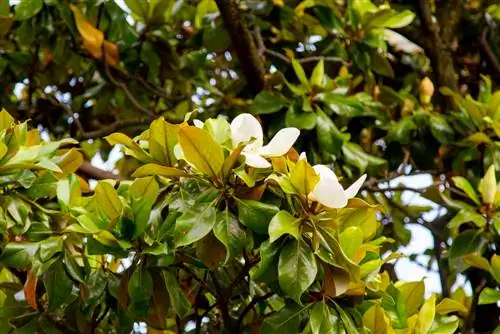
How does the foliage of a magnolia develop?
The foliage of the magnolia is characterized by its large size, shiny green and alternate arrangement. The leaves develop in spring, before or after flowering, depending on the species. In autumn, deciduous magnolias shed their leaves, while evergreen varieties remain leafy.
What characterizes the foliage of the magnolia?
The foliage of the magnolia is usuallyvery largeand, depending on the species, obovate to broadly oval. Due to their size and theshiny green, the alternately arranged magnolia leaves immediately catch the eye. When crushed, they, like the bark, give off an intense scent that some may find slightly pungent.
By the way: The foliage of the magnolia is only slightly poisonous. However, neither humans nor animals should eat the leaves of the tree.
When does the magnolia form its leaves?
Depending on the species, the magnolia forms its foliagein the spring before or after flowering. In the late-flowering varieties the leaves appear beforehand, while in the early-flowering varieties they often only appear after flowering - this is a special feature of this tree.
When does the magnolia shed its leaves?
Summer green magnolias shed their leavesin autumn. This is how they prepare for winter. In evergreen varieties, the leaves remain on the tree all year round.
Attention: If magnolias lose some of their foliage in spring or summer, there may be a disease behind it. Curled leaves are also a warning sign that something is wrong.
Why do magnolia foliage change color?
If the foliage of the magnolia turns yellow or brown, this indicates thatthe plant is not doing well Clarify a possible nutrient deficiency, a possibly unfavorable location and potential illnesses and then take the right measures.
Tip
It is better not to put the leaves of the magnolia in the compost
Since the leaves of the magnolia rot relatively slowly, it is better not to put them in the compost. Instead, dispose of fallen leaves in the organic waste bin.


